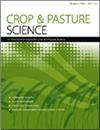减少澳大利亚放牧系统中反刍动物的肠道甲烷——温带豆类和草本植物的作用综述
IF 1.8
4区 农林科学
Q2 AGRICULTURE, MULTIDISCIPLINARY
引用次数: 2
摘要
摘要在澳大利亚,71%的农业温室气体排放是肠道甲烷,主要由放牧绵羊和牛产生。温带低CH4产量的豆类和草本植物可以减少肠道CH4的产生,但需要考虑系统水平的GHG排放。该研究的目的是:(1)制定一个框架,在引入CH4产量低的物种时评估温室气体减排情况;(2) 评估澳大利亚温带豆类和草本植物物种的CH4减少机制;(3) 使用案例研究来证明随着低CH4产量豆类的引入,系统水平GHG排放的预期变化;以及(4)确定知识差距和研究重点。结果表明,降低排放强度(千克二氧化碳当量/千克产品)对减少温室气体排放至关重要,但牲畜生产力也很重要。一些牧场物种具有抗甲烷特性,但反应往往差异很大。在所调查的物种中,双孢霉(biserrula pelecinus)具有降低肠道CH4排放的巨大潜力,但在一项案例研究中,其排放强度与地下三叶草(Trifolium subterraneum)相似,但高于苜蓿(Medicago sativa)。我们得出的结论是,温带豆类和草本植物具有抗甲烷特性和/或高生产力,可以降低反刍动物生产的CH4总排放量和排放强度。一些植物基因型也有很大的多样性,这将有助于更详细地了解与CH4减少相关的植物次生化合物。这篇综述为制定牧场物种混合物提供了一个机会,以在更大或同等的畜牧生产的情况下减少CH4排放。本文章由计算机程序翻译,如有差异,请以英文原文为准。
Reducing enteric methane of ruminants in Australian grazing systems – a review of the role for temperate legumes and herbs
ABSTRACT In Australia, 71% of agricultural greenhouse gas (GHG) emissions are enteric methane (CH4), mostly produced by grazing sheep and cattle. Temperate low CH4 yielding legumes and herbs can mitigate enteric CH4 production, but system-level GHG emissions need to be considered. The aims of the study were to: (1) devise a framework to assess GHG reductions when introducing low CH4 yielding species; (2) assess mechanisms of CH4 reduction in temperate legume and herb species for Australia; (3) use a case study to demonstrate expected changes to system-level GHG emissions with the introduction of low CH4 yielding legumes; and (4) identify knowledge gaps and research priorities. Results demonstrate lowering emissions intensity (kg CO2-equivalent/kg product) is crucial to mitigate GHG emissions, but livestock productivity is also important. Several pasture species have anti-methanogenic properties, but responses often vary considerably. Of the species investigated biserrula (Biserrula pelecinus) has great potential to reduce enteric CH4 emissions, but in a case study its emission intensity was similar to subterranean clover (Trifolium subterraneum) but higher than lucerne (Medicago sativa). We conclude that there are temperate legumes and herbs with anti-methanogenic properties, and/or high productivity that could reduce total CH4 emissions and emissions intensity of ruminant livestock production. There is also great diversity in some plant genotypes that can be exploited, and this will be aided by more detailed understanding of plant secondary compounds associated with CH4 reduction. This review suggests an opportunity to formulate pasture species mixtures to achieve reduced CH4 emissions with greater or equal livestock production.
求助全文
通过发布文献求助,成功后即可免费获取论文全文。
去求助
来源期刊

Crop & Pasture Science
AGRICULTURE, MULTIDISCIPLINARY-
CiteScore
4.20
自引率
15.80%
发文量
111
审稿时长
3 months
期刊介绍:
Crop and Pasture Science (formerly known as Australian Journal of Agricultural Research) is an international journal publishing outcomes of strategic research in crop and pasture sciences and the sustainability of farming systems. The primary focus is broad-scale cereals, grain legumes, oilseeds and pastures. Articles are encouraged that advance understanding in plant-based agricultural systems through the use of well-defined and original aims designed to test a hypothesis, innovative and rigorous experimental design, and strong interpretation. The journal embraces experimental approaches from molecular level to whole systems, and the research must present novel findings and progress the science of agriculture.
Crop and Pasture Science is read by agricultural scientists and plant biologists, industry, administrators, policy-makers, and others with an interest in the challenges and opportunities facing world agricultural production.
Crop and Pasture Science is published with the endorsement of the Commonwealth Scientific and Industrial Research Organisation (CSIRO) and the Australian Academy of Science.
 求助内容:
求助内容: 应助结果提醒方式:
应助结果提醒方式:


